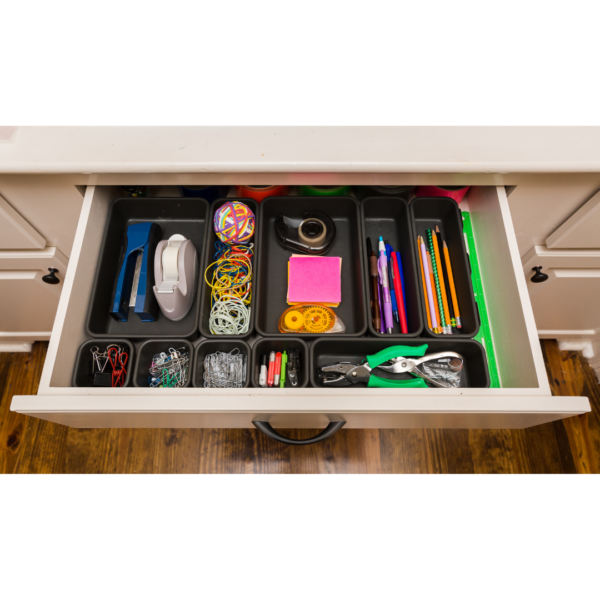Homeschool moms read a lot about how to homeschool and various homeschool approaches. They spent hours pouring over the myriad of homeschool curriculum available, trying to find just the right match for their kids and family. When the boxes of new materials arrive, everyone in the family gets excited to unpack all of the learning potential found in those new books.
Too often, though, the enthusiasm is short-lived because the kids are not cooperative, or they seem to be “behind.” The homeschool parents get concerned that something is wrong in how their child learns. What do they do?

Many moms turn to social media and ask, “What is the best homeschool curriculum for ___th grade?” They get the current five or so trendy programs and launch into purchasing another expensive program. So many moms I’ve known over the years have wasted time and money trying to find the “best” homeschool curriculum, worried over their children’s ability to learn, waited months for an assessment, and still not found the right answer.
So what CAN be done to help your child learn more efficiently and effectively without hopping from one homeschool curriculum to the next?
Here are four components of teaching that we can look at BEFORE switching homeschool curriculum or giving up and putting a child back in an institutional school.
Long ago, I came across research by Robert E. Slavin, who outlined four alterable variables to adjust to improve the effectiveness of teaching. There has been plenty of other research since then that identifies the key factors that impact teaching and learning. However, I have held onto the variables by Slavin because it is easy to remember, and usually, by adjusting one or two of these four factors can completely turn around the frustration in our homeschool!
These four variables follow the letters QAIT.
The letters stand for Quality of Instruction, Appropriate Level of Materials, Incentive or Motivation, and Time Engaged.
So let’s talk about what it means to “alter” or change one of the variables.
1. Quality of Instruction in Homeschool Curriculum
Many homeschool moms expect the curriculum to do the teaching. They give their child a workbook and want the child to work through it without any trouble. But when the content of the homeschool curriculum moves into new information, most children need a teacher to explain or demonstrate a concept or skill. If a kid is struggling to self-teach, parents may assume the child has learning struggles or the curriculum isn’t working.

Since the pandemic, so many new homeschoolers are asking for online or computer-based curriculum. They realize their kids need an instructor. Sometimes, new homeschoolers don’t feel confident in their teaching abilities. Others want to continue to work full-time and use online apps as the primary instructor.
It is tricky to find a balance between clear, direct instruction and allowing a child to work independently for practice of skills. When a child has any type of learning disability, the difficulty to find a good match between curriculum and style of instruction is even more difficult.
Newer homeschoolers often want to try unschooling without knowing what that approach historically has meant. I have noticed that many new homeschoolers think that unschooling is just doing things differently than public schools. However, unschooling traditionally means child-led, very unstructured learning.
Kids with dyslexia and autism, as well as other learning issues, frequently learn best with direct, explicit instruction. That means explaining things that most kids would just pick up as things happen.

If you found a curriculum that you liked and you thought would fit your child, don’t abandon that program at first struggle. Look to see if you just need to clearly explain the information, demonstrate the skill, or repeat a lesson for several days until your child has practiced and mastered the lesson.
The instructional strategies and techniques employed by homeschool moms and dads can be modified to enhance student understanding and engagement. This may involve using a variety of teaching methods that use many senses all at once and involve projects or play for practice of skills.
2. Appropriate Level of Materials in Homeschool Curriculum
If your child is struggling, most likely the materials are too difficult. Each student has three levels of learning. For neurotypical kids, their public school grade level is likely their instructional level. A grade or two lower is the independent level, and a grade or two higher is often a frustration level.
For kids with learning issues, one of the first challenges in homeschooling is to determine where the independent, instructional, and frustration levels are. I always program for the instructional level to be done with me so that I can explain the point of the lesson and observe how my child is able to complete the lesson.

I also program for their independent level because every kiddo has “off” days, but inconsistency in performance is a hallmark characteristic of kids with dyslexia or learning disabilities. By having materials at an easier level helps us keep our routines and adjust to eliminate the meltdowns on the “off” days.
I can keep my kids who read and write way below grade level stimulated with age-appropriate content by doing read-alouds and integrating instructional videos and documentaries. That way, my kids can be challenged without needing to work at their frustration level!
It may seem that having three levels of homeschool curriculum will get expensive, but I only spend money on our core instructional curriculum. I can download easy, independent projects and worksheets for free from the internet or purchase a small practice workbook at the dollar store.
For the content at what would typically be a kid’s frustration level, using a used “spine” or reference textbook for myself and doing the alternative informational input activities often costs less than $10 for the school year.
The levels of content, resources, and materials used in teaching can be modified to cater to the learning needs and interests of students. This may involve using real-life examples, multimedia, or hands-on activities at a variety of levels.
3. Incentive or Motivation
Some kids are eager learners. Many can easily be motivated by an enthusiastic mentor. However, a lot of our kids with learning struggles have to work so hard on academic tasks that the motivation to continue can be completely drained away. Some of them have also experienced failure or humiliation in regular classrooms that we aren’t even aware of.
Kids with learning struggles also tend to use tactile and kinesthetic inputs rather than focusing with visual or auditory attention. One of the first ways to increase motivation is to incorporate hands-on, multisensory and moving activities, especially for phonics, spelling, and math.

Kids who struggle also tend to make more mistakes on their independent work, or they avoid working and take forever to get a short task done. Try to catch your child being actively engaged and praise their work habit!
I am not an advocate of frequent tangible rewards. However, specific praise for the learning behaviors you want to see can help your child know what pleases you. If you use rewards, think of activities you enjoy doing together as the reward rather than toys, food, or screen time. You always want to nurture positive relationships whenever possible. More attention from you for completing school work is way better than needing to deal with negative behavior that disrupts the whole house.

Of course, sometimes a special outing or celebrating major gains with a favorite dinner helps the whole family to work together to learn. We used to do the Pizza Hut Book It program. Eventually, we got tired of pizza rewards for reading and implemented our own monthly celebration of reading.
The use of rewards and incentives can be adjusted to motivate and engage students in the learning process. This may involve providing praise, recognition, or tangible rewards to reinforce desired behaviors or academic achievements.
4. Time Engaged
Slavin’s research looked at time allocated vs time used. We know that the wasted time spent for classroom management and group transitions is eliminated in a homeschool environment, so it just doesn’t take a whole hour to do a lesson in one subject usually. We also know that kids can learn from all kinds of activities in homeschool rather than just from textbooks and worksheets.

Our routine looks different in a homeschool than a schedule would in a school classroom. We do want our children to engage in their learning tasks, but the way that happens can be much more motivating and individualized than with 30 kids in a class.
With learning being more relaxed and reflective, homeschooled kids can have the time to think about what they are learning, ask questions, and compare to previously learned content.
Kids with attention issues frequently struggle to get short paperwork assignments done in a reasonable time. For some, and especially boys, worksheets can seem almost like torture. If your child just sits there not completing a short worksheet, engagement is not happening.
Breaking up the number of problems on a page, challenging races, or rewarding completion in a short amount of time can help a child with ADHD to experience success with activities that do not have an inherent reward system embedded into it. Playing games or gaming apps can help kids with attention problems to use their time more efficiently.

Every year I would try to help my kids organize their supplies so that they could be as independent as they could manage. Having their own materials together in one box or crate would help with time management because we seldom had to go searching for a reading book, workbook, or pencils and markers.
I like to think that we could learn anywhere and everywhere, making the most of our time. We would often practice spelling through word games in the car. We would work on math facts in the backyard or by playing games. Our vacations were often visiting national parks. Junior Ranger activities kept us enjoying nature and learning about social studies and science at the same time.
Time was always something that needed to be managed so that enjoyable social activities wouldn’t take over. In our homeschool community, we had to guard our academic time because there was always a social activity happening. Most years, we did academic studies in the mornings between 8:30 and noon. We had to limit outside activities to afternoons and Fridays. We also adjusted our academic routine to the afternoon when Dad had a shift change at work.
Another reality in a homeschool environment is that time can easily slip away when we get too relaxed without a routine or some structure. Without some management of how time will be used, kids get bored and start to misbehave. Children really do need and thrive with boundaries. If you are struggling with a child with a lot of behaviors, altering how time is used may be one of the first issues to tweak to make your homeschool work better.
Remember, these variables are not independent of each other and can interact in complex ways. By adjusting the factors that impact learning, homeschool parents can create a more effective learning environment and meet the individual needs of their students, including those with neurodiversity!
If you just don’t know what to do with your homeschool curriculum, placement levels, motivating your child, or managing any part of time for your homeschool, you may want to consider becoming a Unique Learners member to find materials and support that will help you and your child to have a more pleasant and productive homeschool!
References and Links
Slavin, R. “A Model of Effective Instruction.” https://www.researchgate.net/profile/Robert-Slavin/publication/232828499_A_Model_of_Effective_Instruction/links/549812290cf2c5a7e342905f/A-Model-of-Effective-Instruction.pdf

